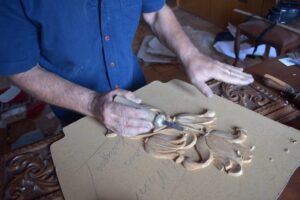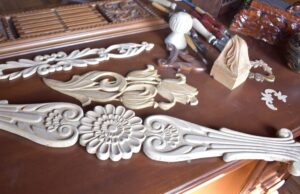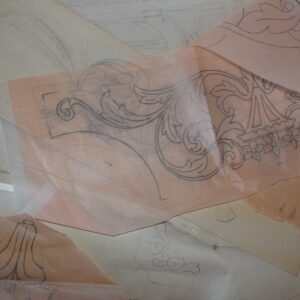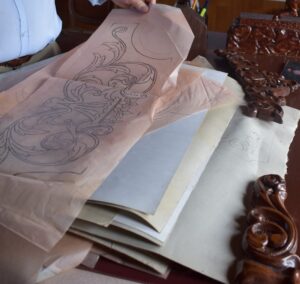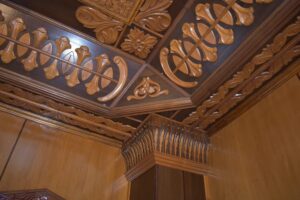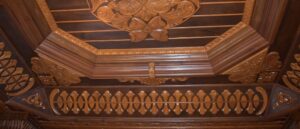Historically, ceilings have been decorated manually by folk craftsmen, using simple handwork tools such as: razor knife, rasp, planer, zgubje, chisel, scraper. All these tools coming in different shapes and sizes are used to realize decorations as requested by the customer.
Groundwork
Ceiling decorations have been crafted by introducing special heritage elements, often based on geometric motifs, such as: medallions or rosettes, corner treatment, capitals, cornices or crown mouldings, as well as other decorations to complete the ceiling surface.
The first phase of this long and intricate process involves considering and surveying the object where the ceiling will be mounted. This phase proceedes with the right measuring of the surface and space for mounting it, fixing the relevant patterns as well as figuring out the amount of wood needed.
Crafting the carved ceiling
The most commonly used woods for carving ceilings are Arrni wood (coniferous) which grows in Lura mountains and Vermoshi pine wood. Both these types are high quality wood.
First, get the right cutting of the timber panels having regard to the size of the decoration. Next, these wood panels are processed shaping them by lathes or other shaping tools. Further, apply sanding (smoothing) rubbing gently the wood surfaces and sides with 180 grid sandpaper or finer sanding with 300 grid sandpaper. Sanding of 180 and 300 grid sandpaper corresponds to the number of paper used for sanding wood panels.
This process continues with drawing the decorations, transferring them onto a tracing paper and drawing on woodwork pieces. The latter are made with stencils.
At this phase, start carving the plank with a chisel, scraper, zgubje, rasp, razor knife. After carving, resume sanding. After jumping to the final phase of carving with the required decorations realized, move on to lacquering the carved plank. It can be done in the workroom where the decoration is carved and once lacquared, is fixed on the object, or the decoration is put on the object and then lacquered.
In both above lacquering cases, drying runs smoothly in a natural way and takes 24 hours at the least. The color most commonly used for lacquering ceilings is brown. This craft of ceilings decoration has been perfected over time until to date, preserving the most prevailing features of Shkodra cultural heritage elements.


